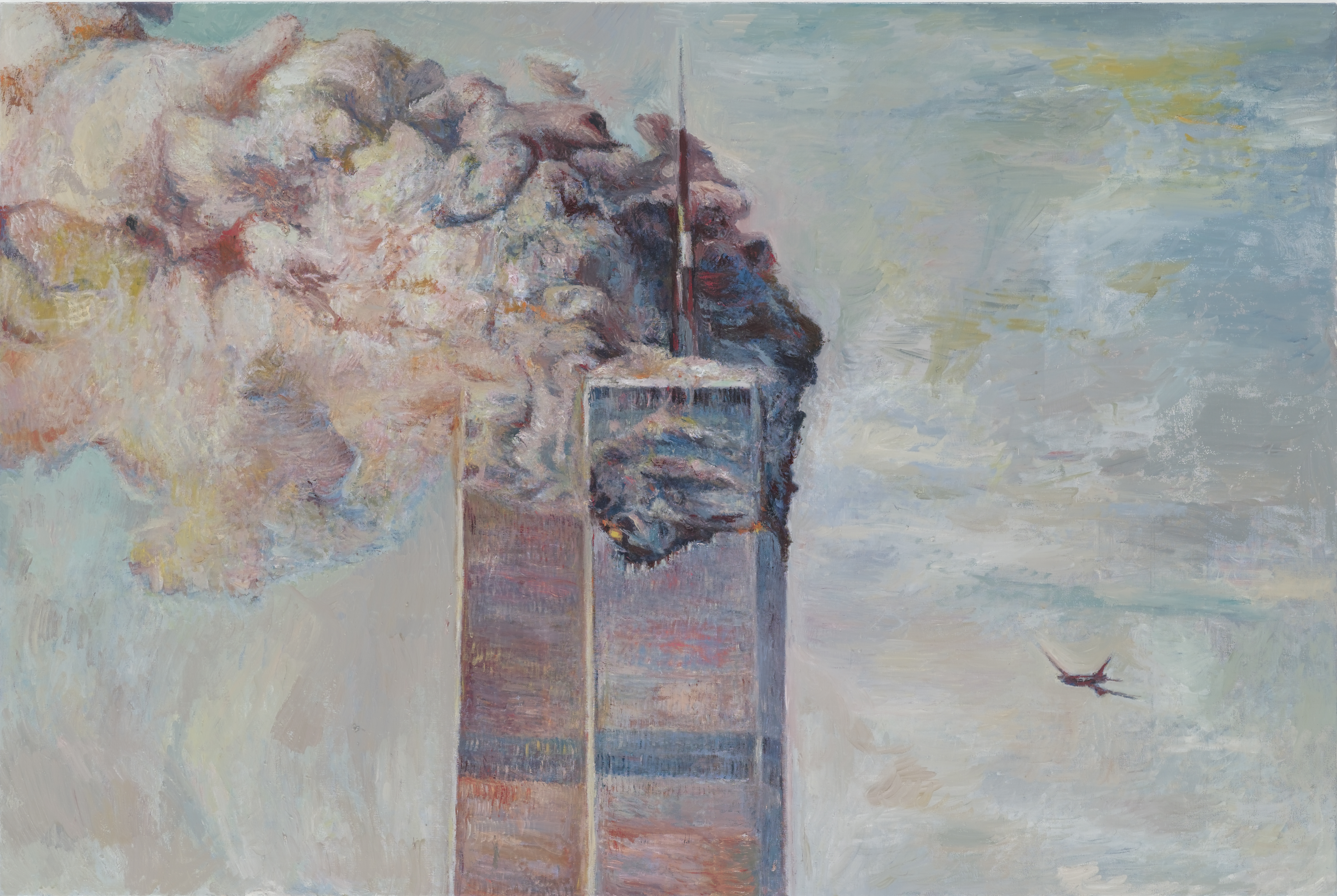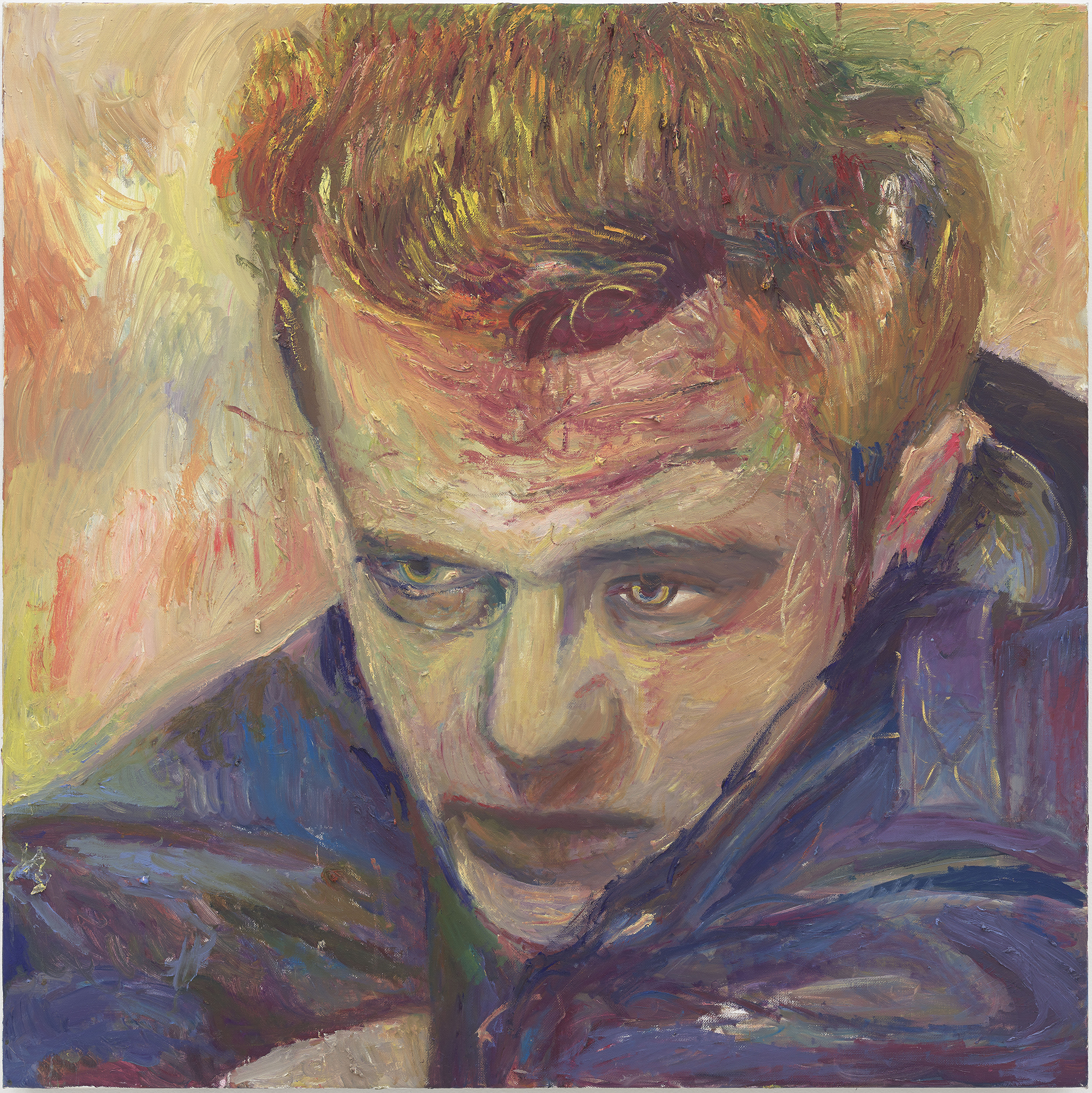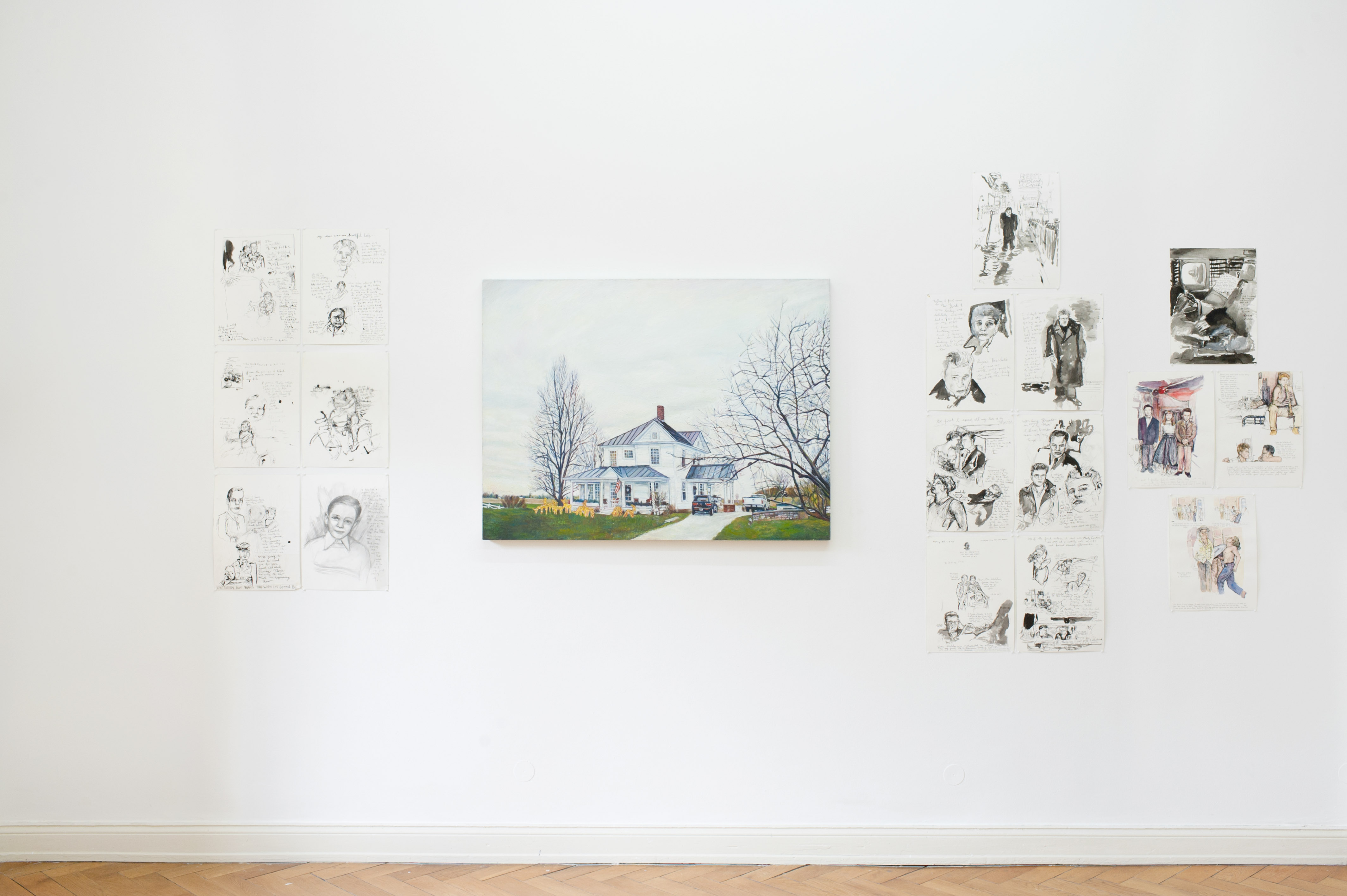
Keith Mayerson. Installation view My American Dream: Berlin Edition, 2016. Featuring The James Dean Family Farmhouse, oil on linen, 2011-2012. Courtesy Weiss Berlin.
It feels like a dark time for the American Dream. Perhaps it was always a homespun mirage, appealing to nativist impulses through cloudy desires for success, coded as bootstrap but made for the privileged few. Or perhaps part of it stubbornly endures even the deepest moral crisis, shifting forms, adapting. The past weeks and months have exposed the corroded armature of our collective Dream, arguably built by practices of oppression and concepts of white supremacy. So what is there to salvage, and what materials can we use to rebuild it?
In a decade-long, ongoing painting series, My American Dream, Keith Mayerson investigates this most enduring of myths with unabashed tenderness. His paintings are gem-like, with masterful depictions of porches, Porsches, canyons, sunsets, and prairies. These appear alongside tender pastel renderings of civil-rights leaders, pioneers like Sojourner Truth and Cesar Chavez, who Mayerson describes as “fighters for agency in a world of corporate commodity culture.”1 In the series, there are also harried ink drawings of rebels like James Dean as well as intimate glimpses of Mayerson’s childhood and his life with his partner and their dogs.
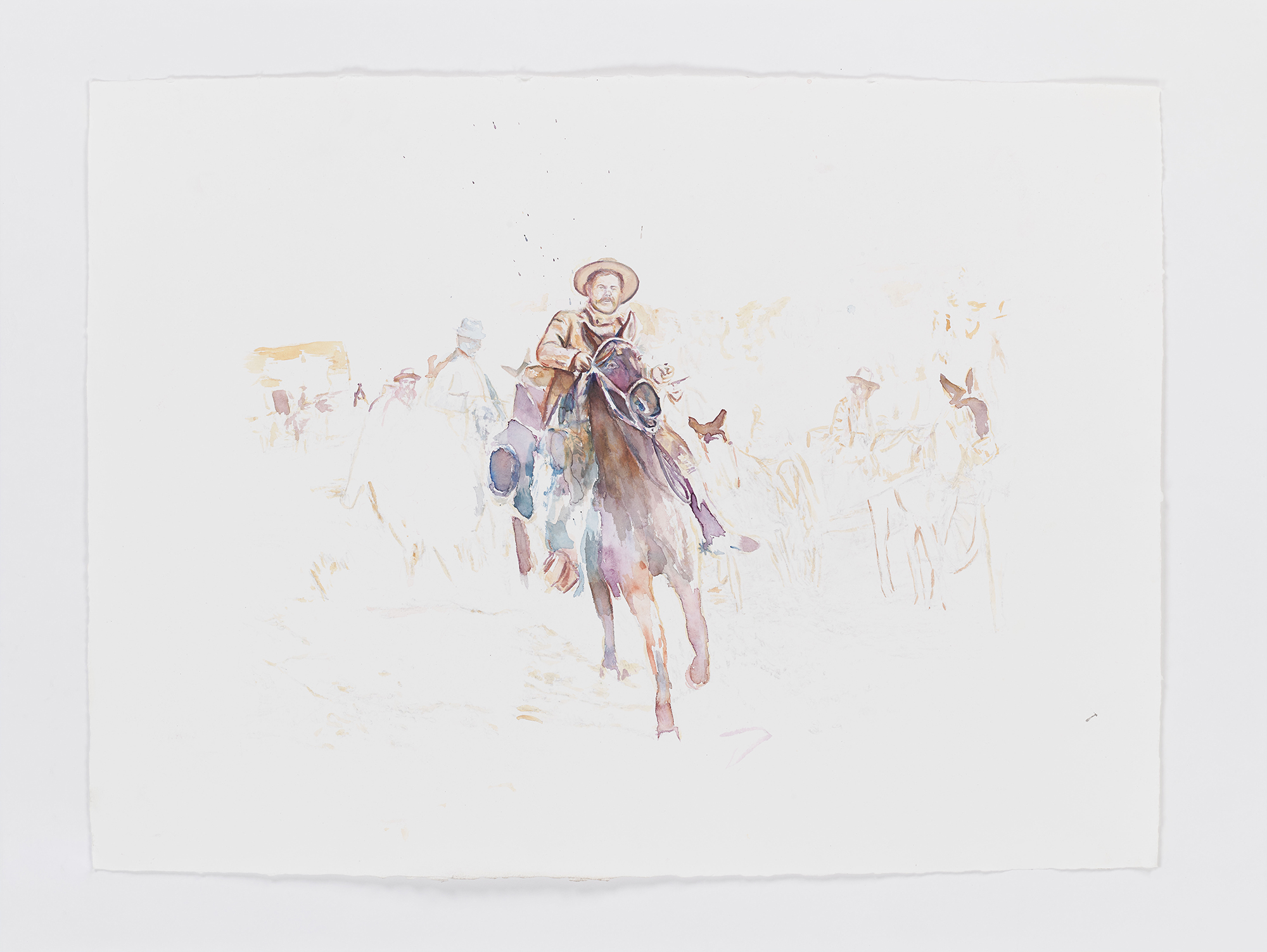
Keith Mayerson. Pancho Villa, 2016. Watercolor and graphite on velour paper. Courtesy of Weiss Berlin. Mayerson,
Mayerson began the series in 1999 with the ascent of George W. Bush, envisioning an alternate America “where Andrew, my gay husband, and I could enjoy our liberty.” He painted scenes of Americana that were meaningful to him, images he could sit with for a month or so in meditative communion, allowing his subconscious to “leak through.” Mayerson was teaching a drawing class in a Manhattan park as the twin towers fell. He later recorded the traumatic event in an impressionist haze, partly influenced by the smoke plumes in Monet’s Gare Saint-Lazare paintings. As Mayerson explains, “It was a beautiful clear day that morning, and I was (as were many) fully aware of the irony of such a horribly catastrophic event juxtaposed to a clear and light-blue sky of a September morning.”
Last month, Mayerson presented My American Dream: Berlin Edition at Weiss Berlin, a recently opened gallery in the Charlottenburg district of Berlin. The exhibition was divided into three chapters: “Destiny,” “Pioneers,” and “Rebels.”
The paintings in “Destiny” are otherworldly and unnervingly bright, radiating a hyper-nostalgia from whitewashed facades and mountaintops, based on snapshots of Western border towns culled from a road trip that Mayerson took last year. The recent paradigm shift in American politics recontextualizes this suite of paintings, imbuing them with anxious nostalgia and foreboding. With a slight, tilting fence in the foreground, the work Paso Del Norte: The US/Mexico Border presents an eerie calm and is charged by romantic stillness and dark visions of the future.
In Mayerson’s paintings there is a palpable yearning for drifting plains and grand, exultant spaces, but one also senses a cultural disconnection. In Elvis at Graceland, Mayerson’s torso completes that of The King in a portrait in a gaudy, golden frame, exposing the reflections of tourists in the mirrored wall. As in a low-budget B-movie, the workings of cultural artifice are unmasked, leaving viewers to question Elvis’s role as both a populist hero and a cultural appropriator.
The works in “Pioneers” are supple and fleeting, executed lightly in watercolors and pastels on velour-like paper, the edges rounded and the subjects often gazing in dreamy repose. Mayerson laments art’s current disconnection from pathos, stating that now “emotions are supposed to be uncool.” In response, the works in “Pioneers” read as effete love letters, tokens of affection and warmth, resembling Victorian portraiture. Shrouded by fabric, Harriet Tubman is a solitary forested altarpiece, challenging the viewer with a soft defiance. Nearby, Muhammad Ali and Malcolm X share a convivial, unguarded moment, and the titular figure in Billy the Kidd emerges playfully from a silken watercolor backdrop.
In the “Rebel” room at Weiss Berlin, drawings of James Dean’s imaginary life in New York are juxtaposed with painted mid-century film stills of the late actor. For most of Mayerson’s career, James Dean has been an avatar and icon, acting as a “strong homo protagonist who gave a voice to youth culture.” Returning to his comics background, Mayerson is currently working on a graphic-novel adaptation of James Dean’s life for Fantagraphics.
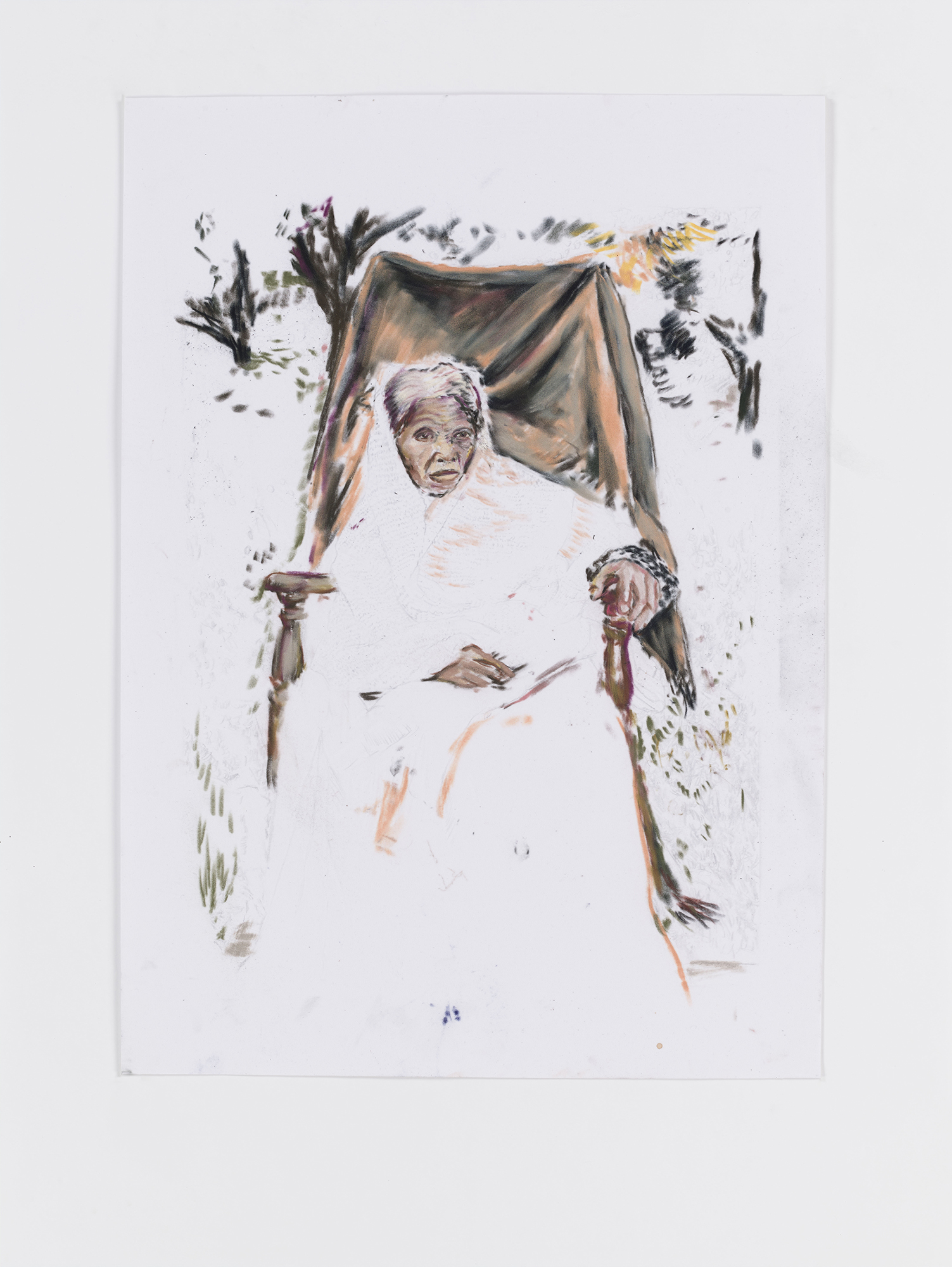
Keith Mayerson. Harriet Tubman, 2016. Pastel and graphite on velour paper. Courtesy of Weiss Berlin.
Mayerson thinks of himself as an avant-garde cartoonist and of his exhibitions as “books on the wall.” When conceiving of a show, he tries to maintain a comic-book layout, organizing works on vertical or horizontal axes, aspiring to poetic juxtapositions, and creating unexpected narrative arcs. Next year Mayerson will install My American Dream at the Museum of Contemporary Art Cleveland, displaying the works in a sprawling panorama. This presentation recalls the commitment to grand, immersive narrative seen in the work of Diego Rivera and his American Regionalist counterpart, Thomas Hart Benton.
When speaking about visual storytelling and the potential of comics, Mayerson asserts that these are especially potent mediums in times of political distress and that the accessibility of comics allows their messages to supersede those of the “citadels” of galleries and museums.
My American Dream is a visual reminder of the delicacy of hope and of our complicated national fictions. A nonlinear narrative pastiche of the American sublime, it is incandescent, ambivalent, and straining toward a kinder future. In keeping with that vision, Mayerson offered the following post-election wisdom: “In this kind of environment, art matters the most…art that is decorative or content-less seems supercilious. Art is language, language is power.”
1. Unless otherwise noted, all quotes are from the author’s conversation with Keith Mayerson on November 16th, 2016.

